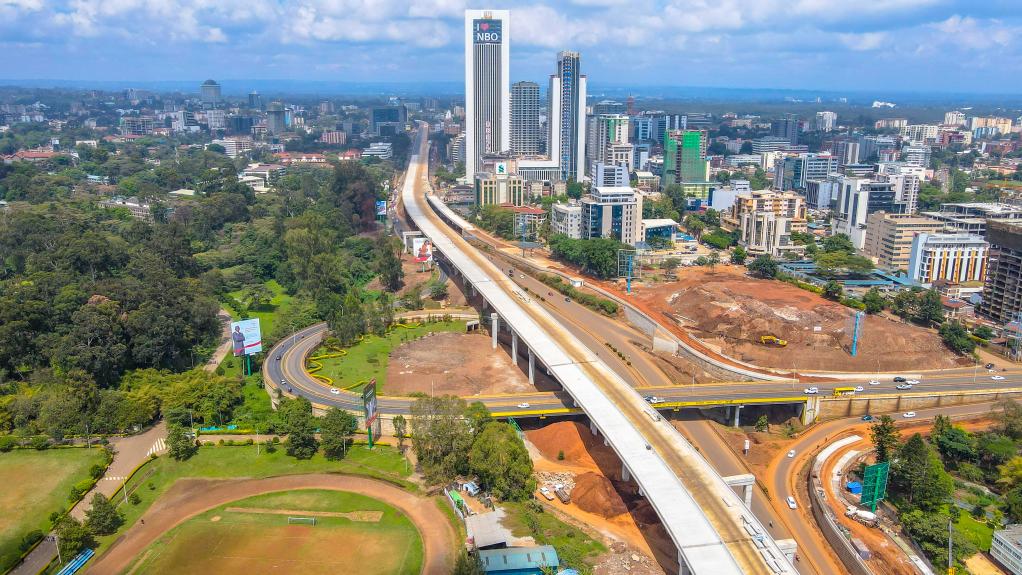Expressway in Nairobi offers lessons for Kenya and beyond
By Cavince Adhere | China Daily Global | Updated: 2022-06-30 09:19

The Nairobi Expressway was opened to traffic on a trial basis on May 14 ahead of the official launch. The expressway, which is aimed at cutting travel time across the city from the current two hours to just about 20 minutes, has received an enthusiastic reception, with over 30,000 cars using the road daily.
Despite Nairobi's pivotal location as the gateway to Africa's eastern and central regions, its traffic snarls have become notorious. A 2019 study by the Institute of Economic Affairs found that the country was losing over 50 million Kenyan shillings ($424,500) daily to traffic congestion, mostly in Nairobi.
Stretching for 27 kilometers, the Nairobi Expressway is an important piece in Kenya's jigsaw puzzle in search for a more efficient transportation system.
First, it links the central business district with Jomo Kenyatta International Airport and the Standard Gauge Railway-all of which are crucial in aiding movement into and out of the city. The expressway also terminates in the Westlands district near the United Nations complex, where many international meetings take place.
Besides cutting travel time, the expressway will also contribute to Kenya's economic well-being in various ways. During its construction, the expressway provided over 6,000 direct jobs, a major feat considering that the work continued amid the COVID-19 pandemic. Over 200 subcontractors and suppliers also found opportunities in the construction phase.
Second, the construction of the expressway has boosted Kenya's industrial and technical skills capacity in the road construction sector. Young Kenyans were able to acquire skills that they can now use in search of additional opportunities in other projects. In addition, the production sites for the materials used in the construction of the road will provide materials to other projects in Kenya and beyond.
Third, the expressway offers a model of cooperation between China and Africa. Kenya's government did not incur the financial cost of the project, which was financed and built by China Road and Bridge Corp under a public-private partnership model. Hence, a public good was provided without increasing public debt.
The "build, operate and transfer "model also means that the operator must provide quality service in order to retain clients. The co-creation model further enhances co-ownership and responsibility on the side of the government as well as the operator-all of which should eventually be reflected in the efficiency of the road.
The public-private partnership model also augments the push by Beijing for co-construction with Belt and Road Initiative partners. In order to buoy the sustainability and responsibility of infrastructure deals along the BRI routes, China is nudging development partners to pull together informational, financial and technical resources.
As Kenya's first road that motorists will pay toll fees to use, the Nairobi Expressway is also an experiment in how receptive Kenyan motorists will be to the new reality. However, due to the roadway's convenience, reduction in wear and tear, safety and ability to plan ahead on use of time, the road's users should find it both rational and economical to use the expressway.
The expressway is already making positive waves in Kenya's social sector. The inaugural City Marathon was held on the roadway in a move that promised to transform Kenya's sports legacy. Nairobi is now more confident as it bids for global athletic events, especially marathons. Better traffic flow and ease of connectivity to major city entry and exit points will also promote the tourism industry.
To harness the full potential of the expressway, the public should appreciate its utilitarian value and give constructive feedback. Similarly, the operator must address any concerns raised by motorists, and must implement sustainable remedies and provide a much-needed traffic congestion respite for Nairobi's residents and visitors.
The author is an international relations scholar in Nairobi, Kenya.
























